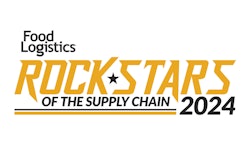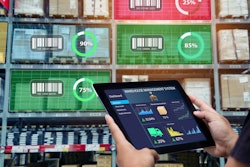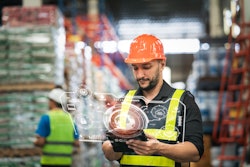
From enhancing visibility, building resiliency and mitigating risk to leveraging smart technologies and automated software, a digital supply chain means different things to different companies.
Yet, digitization itself presents the same benefits across the board in moving temperature-controlled foods in a safe and efficient manner.
Marina Mayer, Editor-in-Chief of Food Logistics and Supply & Demand Chain Executive, talks exclusively with Casey Jenkins, owner of Eight Twenty-Eight Consulting LLC, on why a more digital supply chain pushes data-driven decision making and propels the transportation and warehousing sector forward.
CLICK HERE to read the article in full.
Food Logistics: What is a digital supply chain? What does it mean for you/the cold food chain?
Casey Jenkins: A digital supply chain is a supply chain that utilizes advanced technologies and systems for better performance, increased efficiency, and greater agility. In conjunction with trusting partnerships, a digital supply chain allows for seamless flow of data and information to enhance visibility, drive collaboration, and support quick decision making among supply chain stakeholders.
To me, a digital supply chain means that processes are supported with technology tools to drive the flow of data and information. For any supply chain (but especially the cold food supply chain), rapid conveyance of data is a necessity to avoid and mitigate risks. Along with that, the availability of information supports data-driven decision making that is founded upon accuracy, timeliness, visibility, and collaboration.
Food Logistics: Describe some technologies and solutions defining the future of digital supply chains.
Jenkins: The biggest topic that has been in the news across many industries is the continued use of automation, but also leveraging artificial intelligence (AI). I have seen this specifically related to supply and demand planning (which triggers subsequent activities within an organization) as a means to regulate inventory levels.
Another technology that has been in discussions is the use of digital twins. Essentially digital twins are modeling tools that create replicas of a supply chain (or twin) to be able to test “what-if” type scenarios. In other words, it allows modeling of outcomes to test different actions, approaches, or potential risks to see the consequences; both positive and negative.
It’s important for companies to keep in mind though that these are simply tools that can be leveraged. Even AI needs some oversight until we’re able to understand it better and how to use it effectively within our operations.
Food Logistics: Where to start? How do companies start the journey toward a more digital supply chain? Outline some good first steps.
Jenkins: First, companies need to identify and understand their processes both internally and externally. This includes mapping out the current state to understand holistically where data, information, products, services, suppliers, etc. are flowing. Seeing operations at this higher-level will help identify where gaps, inefficiencies, or problem areas exist that technology or digitalization can close or solve.
The next step would be to actually identify process gaps and start to formulate how to solve them. Typically, this involves creating a roadmap that will take the company to a future desired state (via improvement initiatives) where technology is integrated into their operations.
Approaching with this top-down perspective allows for multiple gaps across different functional areas to be identified and closed, and using technology solutions that can solve multiple problems at once. Keep in mind that change management is also key in getting the most out of your technology implementations!
It’s important to note that technology isn’t the panacea; instead, tech solutions are tools that can support operations. That’s why it’s also important to note that there has to be an understanding of the solutions that are out there and how they can be incorporated effectively.
There’s an interlacing understanding of processes and technology to be able to go on the journey to a more digital supply chain.
CLICK HERE to read the "Breaking Down the Digital Supply Chain" article in full.
Food Logistics: What sectors (i.e., agriculture, frozen foods, etc.) are more impacted/affected by digitalization than others and why?
Jenkins: I would argue that all sectors would be impacted by digitalization, but hopefully in a positive way and not negatively. I think the challenge is keeping operations flowing while transforming and not allowing implementations to cause disruptions. Within any sector of food and beverage, the ability to have access and visibility into data/information will promote a more proactive supply chain that can catch risks before they occur.
The whole industry will be boosted forward from a sustainability sense as well. Proactivity allows for quick pivoting to various changes or disruptions, the ability to mitigate or resolve risks before they’re presented, and the saving of unnecessary or wasteful activities.
I think it’s also important to point out that within the food industry, the consumer safety is such an important aspect to be considerate of. With a more digital supply chain, there’s a greater ability to catch any potential consumer risks before they occur.
Food Logistics: From food production to the retail and/or foodservice outlet, how does a digital supply chain transform the way food is moved from Point A to Point B? This could also entail fleet, warehousing etc.
Jenkins: This is such a fantastic question. A more digital supply chain pushes data-driven decision making (barring that the data is of high quality); from manufacturing, to shipping, to warehousing and distribution.
It’s important to keep in mind that all aspects of supply chain are connected. So, the logistics around moving food from Point A to Point B impacts and is impacted by other functional areas within the supply chain.
However, specifically related to transportation and warehousing within the food supply chain, a digital transformation will definitely propel this functional area forward.
With transportation specifically, the ability to digitally transform where all members of the supply chain have visibility to the shipment data will be key in driving proactivity and collaboration. And when I say all parties, I’m referring to the shipper, carrier, receiver, warehouse, end-user; all of the stakeholders involved in a shipment. Shipping is more encompassing than just putting freight on a truck and hauling it, especially when it comes to food or perishable items. While moving it is important, there are other processes involved internally and externally that require shipment information to be able to plan and execute: carrier acquisition or fleet planning, temperature thresholds (if a temp controlled item), dock coordination in both shipping and receiving, picking/packing/shipping, physically receiving and slotting or warehousing. There are a lot of moving parts, where easier access and conveyance of information would certainly streamline or create efficiency.
This concept then feeds into the warehousing piece in that the warehouse has to prep internally for dock operations, receipt, slotting, and inventory reconciling. When the shipper/manufacturer is sending out product, the receiver is usually notified it’s coming. So having this information conveyed and then having access to it while in transit allows for the receiver or warehouse to prepare.
A more digital supply chain is also important for risk management. Should a consumer risk be identified with any perishable products, having the ability to access data quickly to identify where the products are at will be key in keeping the risk maintained.
Food Logistics: Describe some other trends and challenges with regards to digital supply chains.
Jenkins: The biggest challenges to digital supply chains are lack of change management post implementation, poor data quality, and implementing solutions that don’t solve the root of the issues. This goes back to understanding the processes that drive your operations; without that understanding and without getting to the root of what’s causing issues within your supply chain, problems are going to continue to manifest despite the technology implemented.
Change management is a key piece to transforming digitally. In order for companies to get the return on their investment (an actual successful use of the technology implemented), the change has to be managed. This includes developing new processes around the new tools being used, training resources on how to use the tools, and monitoring the success of the initiative well after implementation occurs via key performance indicators (KPIs).
Data quality is another challenge. It holds true to the phrase, “garbage in, garbage out.” If you don’t have quality data being processed (both in and out), the outcome will not prove useful. So you can have all of the latest and greatest technology, but if it’s being fed with bad data it will still produce bad results. Data is housed within the overarching system of business processes and the processing of data (collection, filtering, sorting, analyzation, storage, and actioning) isn’t just a one-time transaction. Data flows throughout business processes, so bad inputs at the start will flow throughout the remainder of the processes and produce inaccuracies, inefficiencies, and waste. When it comes down to it, would companies set up a bad process or system and expect great results? No. So the same concept can be applied to data as well.
Food Logistics: What are some things not addressed above that may be pertinent to our readers?
Jenkins: Don’t try to run before you can crawl! It’s such a cliché phrase but when it comes to digital transformations, things have to be taken in stride. For example, you can’t go from using spreadsheets to using full automation in one initiative. That’s setting yourself up for failure. Instead, approaching digital transformation with a realistic perspective will help to embrace the change. It’s being realistic about where your company is at, where your knowledge base around these concepts are at, and having expectations that there will be some bumps in the road along the way. Small changes and steps forward are still steps forward.
It's also important to note that the only way a true digital transformation can occur is if all parties of the supply chain are approaching business to business interactions as a partnership. There has to be a level of trust and security with data and information flows so that there is true visibility and collaboration.
CLICK HERE to read the article in full.



















